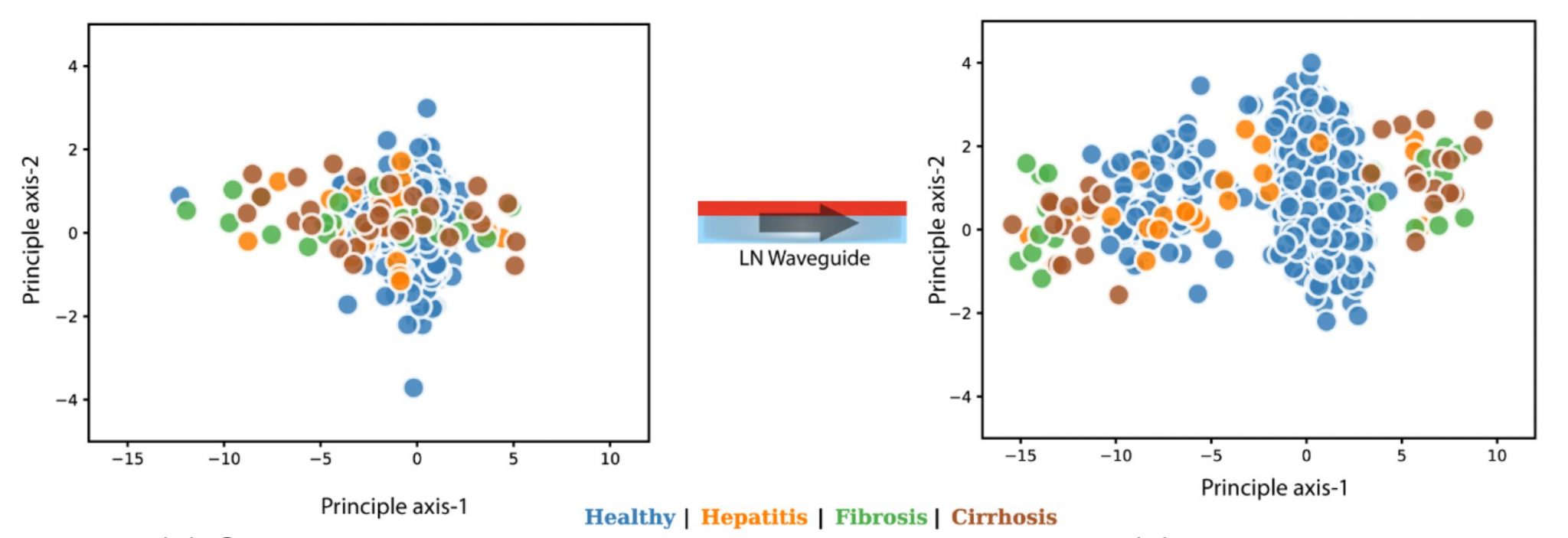In our recent study, we demonstrated that light propagation inside lithium niobate waveguide can be utilized as nonlinear, high-dimensional data transform units, and thanks to its rich physical dynamics, machine learning tasks could be performed with a much smaller dependence on digital electrical hardware (such as GPUs). For example, in Figure-1 we see that an optical waveguide helps the classification of diseases by increasing distances between classes after the waveguide. This phenomenon holds promise to alleviate the consequences of large neural network models, such as high energy consumption and an exponential increase in the need of digital computation resources. In our first approach, the waveguide does not include any memory elements, which is one of the essential ingredients of modern models like GPT-3. Having an optical memory is a long-standing challenge in the field. We are trying to solve it by benefitting the memory effect that we have observed in nanoparticles recently.

Upconversion nanoparticles (UCNPs) are capable of converting near-infrared (NIR) light to visible or ultra-violet (UV) light. These UCNPs also have great photostability and non-photoblinking nature. The rise and decay dynamics depend on various parameters such as chemical composition, excitation intensity, fluorescent wavelength, and pulse duration. If the dark time between two excitation pulse is shorter than the decay time, the output of the next pulse will carry the information of the first pulse.

During this semester project, the student will be provided with the optical setup and the code to manipulate the input and output of the system. The student will characterize the scattering system using the fluorescent output patterns from UCNPs. The student will perform machine learning experiments on scattering medium and nanoparticle thin film for optical processing of time-dependent data. For example, the task can autonomous driving decision estimation from lidar recordings.
Contacts
Mustafa Yildirim ([email protected])
Qianyi Zhang ([email protected])